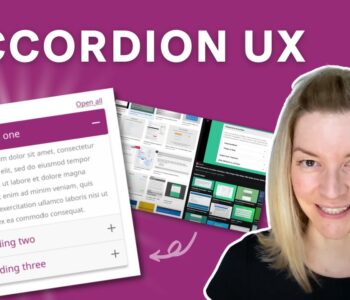
What is a lightbox in web design?
Lightboxes are a great way to highlight a new product. You can even pair it with a limited-time sale for a great deal of conversion. However, before you go ahead and implement this feature on your site, you should know what a lightbox is and how to trigger it. This article will cover the basics and help you capture more leads with this powerful tool. Read on to learn more.
Create a lightbox
The first step in creating a lightbox in web design is to make sure that the link is correctly formatted. It should be a simple text link, such as “Click Here.” After that, you’re ready to save your new lightbox as an HTML element. Now, the lightbox will pop up anywhere on your website. A lightbox can be annoying when a user isn’t expecting it and when they perform other actions. The purpose of the lightbox is to draw attention to informative content. Its copy should be short and to the point.
To create a lightbox on your website, first install the recommended plugin. Then, add images to your gallery. This gallery will contain images for promotional purposes. Next, click on the text box at the bottom of the page and select the images you want to include in the lightbox. If you want to make the lightbox more customized, you can add additional options. If you don’t want to use an image as a lightbox, make sure to type the name of the photo album or video.
You can use popups to collect email addresses, but you may also want to consider a lightbox. This style will allow your visitors to close them easily and is familiar to many users. Because popups can be annoying, many web browsers now have the option to block them completely. If you’re not comfortable with popups on your site, opting for a lightbox will be the best option. According to Sumo, the average conversion rate for popups was 3%, but the top ten percent were over nine percent.
Lightboxes are useful for a variety of reasons. They can increase revenue on ecommerce websites or nonprofit organizations. For example, a lightbox may appear at checkout or when related products are added to a cart. Additionally, a lightbox may pop up when a user wants to donate money. A lightbox can also prompt the user to subscribe to an email list or send a message. If the lightbox is placed at the bottom of a page, it can be hidden by another page.
Triggering a lightbox
You can trigger a lightbox with a text trigger, as well as an image. To trigger a lightbox, simply highlight the text, click the link icon in the context menu (found above the widget), and then click the Show lightbox link. To verify that the text trigger is displayed, open the site, or click on the element to view the lightbox. To trigger a lightbox with an image, you need to choose an image.
The lightbox can also be triggered to appear on specific pages. For example, if the visitor lands on a page containing an exclusive discount, the lightbox can appear as an exit popup. It’s important to keep the popup simple and easy to manage, as users are unlikely to respond to an interruption in their task. Triggering a lightbox with a text overlay is a great way to avoid annoying visitors, while ensuring that it delivers exactly what you want.
Triggering a lightbox in web designs requires a small amount of code, and you should test the effect to see if it works before implementing it. Remember that the popup should always be relevant to the user. An example of this would be a discount code on a product page, and an email signup form on a blog post. If the reader has already registered on your blog, he or she may need to see more content.
Before triggering a lightbox, you must decide which type of content will be most valuable to your visitors. It’s best to avoid triggering a lightbox on a website with a newsletter signup box if the content is too small and irrelevant for your readers. Instead, you can use lightboxes for discounts and sitewide coupons. The trick is to find a combination of these strategies that boosts conversion rates.
Triggering a lightbox in web designing can be used to capture the attention of visitors, display important messages, or entice them to leave the site. Most people use a lightbox to promote an email or newsletter signup. Creating a minimalist design and a CTA button can make a lightbox more eye-catching than a simple dismiss button. So, if you’re interested in creating a lightbox in web design, start experimenting!
Adding a lightbox to a website
Adding a lightbox to your website is a powerful way to display images and videos, and emphasize important messages. You can apply the lightbox to a website whenever a user enters a particular section of your website, such as when a user completes the checkout process. Alternatively, you can trigger a lightbox to open when a user makes a one-time donation or visits four product pages.
Once you’ve installed the recommended plugin, the next step is to add the images to the gallery. This gallery will contain promotional images. You’ll then see a text box on the bottom of the page with four options. Select the images you want to add to the lightbox. You can now preview your lightbox on a browser. If you’re unsure how to use the lightbox, you can view the documentation.
Adding a lightbox to a site is an effective way to increase email signups. Make sure you’ve done your research and know which landing pages are most likely to generate email signups. Lightboxes make it easy for visitors to opt-in to your list. Just be sure to make the popups highly personalized and targeted for your visitors. You can use software like OptinMonster to manage when and where they appear. This way, you can think about the intent of the visitors.
Adding a lightbox to a webpage can increase a company’s leads by as much as 65%. BitNinja, a technology company that makes lightboxes, found that strategically placing the lightbox on a website increased their leads by 65%. Additionally, it also increased revenue. The benefits of a lightbox are clear, and you should consider implementing this feature on your website.
Lightbox popups are a great way to entice visitors to opt-in to your newsletter, opt-in to your event, or register for a contest. While lightbox popups are a great way to increase sales, you should also consider how they can be used to encourage visitors to stay on your site longer. Most lightbox popups use a form that is able to be dismissed by hovering over an X button or clicking on the underlined text. Compared to other popups, lightboxes are far less annoying and more effective.
Using a lightbox to capture leads
The primary purpose of a lightbox is to present a small amount of direct information to users. The user may be browsing a support page, for example, and look for a way to contact the company with their concerns. A lightbox will appear when a user interacts with the page, such as pressing the “contact us” link. The user should then select the images they want to see displayed in the lightbox.
Unlike pop-ups, lightbox popups can’t be ignored, but you must make sure they’re personal, relevant to the visitors, and contain the right offer. Use a tool like OptinMonster to customize when your lightbox popup appears and think about your audience’s intent. This way, you’ll ensure that the visitors you’re targeting are the ones most likely to opt-in to your offer.
Having a lightbox on a page has several benefits. If a visitor clicks through it, they can see other similar products, which may increase their chances of making a purchase. A lightbox also reduces the risk of a visitor clicking away from the page before they can complete their purchase. By displaying similar products, a lightbox can help a website increase revenue.
When designing a website, you must use an exit-intent lightbox to capture leads. This popup appears when a visitor is about to exit the site without converting. It can also be used to display a survey. Exit-intent lightbox popups are effective tools for capturing leads in online businesses, especially eCommerce ones. If you’re promoting an eCommerce site, it’s essential to provide discount codes, which encourage customers to buy more. Lightbox popups also allow customers to browse through products at their own pace.
Another effective use of a lightbox is as a coupon. By using this, you can limit the sale to a limited number of visitors, which increases the chances of conversion. For instance, if a visitor is looking for recipes, they should see cooking-related offers in the lightbox popup. Similarly, if a visitor is browsing home improvement posts, they should see home-decor related offers. However, if you use lightbox popups to promote a promotion, you can use a simple timer to remind them that the offer is only for a limited period of time.



